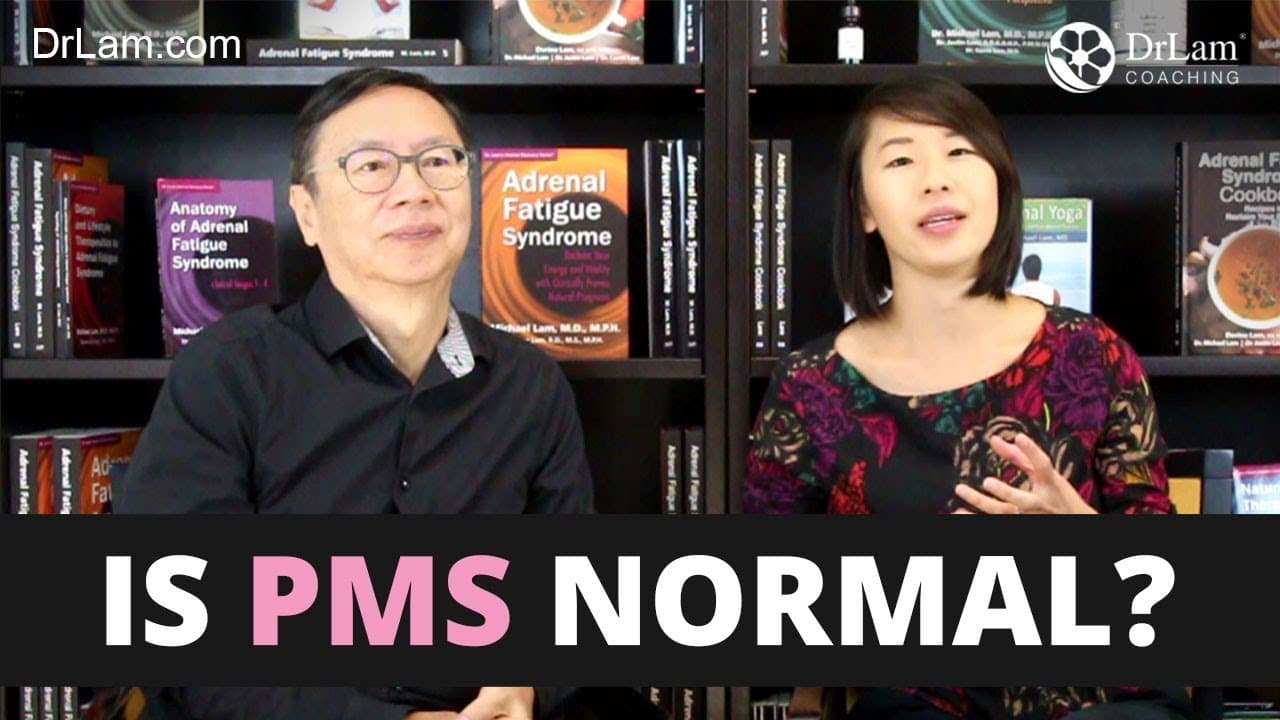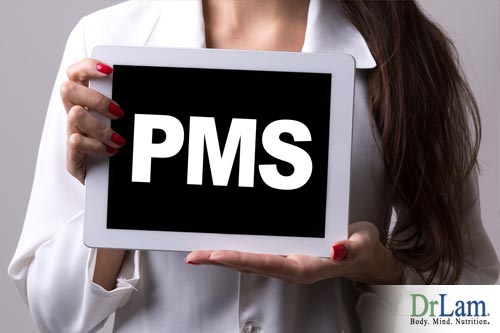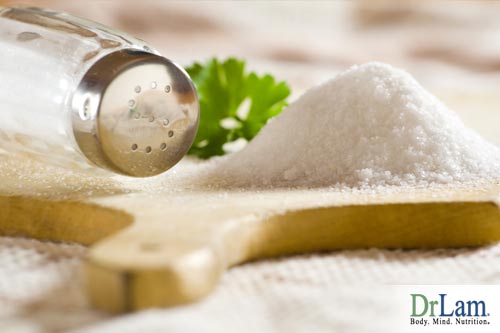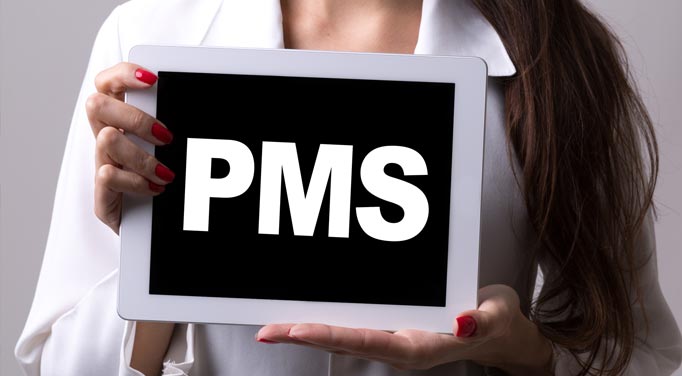
 Many women have PMS. It is the natural result of the whole menstrual cycle and the accompanying changes in hormone balances. Many, however, find that their PMS symptoms tend to be worse when they have adrenal fatigue. This state of affairs is usually due to an imbalance in the hormonal axis, and which, under normal circumstances, should rectify itself. Where a situation is not normal, however, one may need to look at underlying issues in order to see to the problem.
Many women have PMS. It is the natural result of the whole menstrual cycle and the accompanying changes in hormone balances. Many, however, find that their PMS symptoms tend to be worse when they have adrenal fatigue. This state of affairs is usually due to an imbalance in the hormonal axis, and which, under normal circumstances, should rectify itself. Where a situation is not normal, however, one may need to look at underlying issues in order to see to the problem.
The hormonal axis is made up of various glands that form a part of the endocrine system. Perhaps the most famous is the Hypothalmic-Pituitary-Adrenal (HPA) axis that regulate stress. The Ovarian-Adrenal-Thyroid (OAT) axis regulates aspects such as mood, reproduction, metabolism, growth, and our response to any stimuli.
Hormones are transported via our blood and attach to receptors in the target tissue where they stimulate the targeted destination to perform various functions. When, for any given reason, there is a disruption in the hormonal axis, the necessary hormones are not produced as they should, and the result is spread throughout your system. Long-term disruption of your hormonal axis tends to result in what is known as adrenal fatigue and hormone imbalance, which has a list of undesirable consequences.
The glands primarily involved in the hormonal axis and the endocrine system include, amongst others, the hypothalamus, the pineal gland, the pituitary gland, the thyroid, the adrenal glands, the pancreas, the ovaries (in women), and the testes (in men). The different hormones each have their own, unique function. Estrogen, for example, is the main sex hormone for women, and testosterone has a similar function in men. Each gland, therefore, serves a different function according to the hormone they are responsible for.
The hypothalamus produces the hormones that allow us to feel good about ourselves (dopamine), that allow us to sleep (melatonin), and control the body’s temperature, sex drive, hunger, and thirst.
The pituitary gland is considered the master gland as it sends out messages to the other glands stimulating them to produce the hormones needed.
The adrenals produce cortisol, also known as the stress hormone, and the hormones that control your sex drive.
The hormones produced by the thyroid play a role in controlling your heart rate and burning calories.
The pancreas helps control blood sugar levels by producing insulin.
The ovaries produce female sex hormones, i.e. estrogen, testosterone, and progesterone.
Although all these hormones are important and play an important role in bodily function, certain ones, during times of stress, are considered important for immediate survival, and the body produces more of them than others. Once the body perceives the threat as removed, all hormone production usually resumes as normal, and the hormonal axis eventually balances out.
 The adrenal glands are responsible for the production of over fifty hormones in the body. During any stressful situation, the hypothalamus in the brain notices it and produces hormones that send messages to the pituitary gland, which in turn tell the adrenal glands that there is a problem. The adrenal glands go into overdrive and produce high levels of cortisol and adrenalin, thereby readying the body to either fight or flee. These hormones allow you to deal with the situation, and, under normal circumstances, once the stressful situation is over, your adrenals will go back to the normal production of these two hormones.
The adrenal glands are responsible for the production of over fifty hormones in the body. During any stressful situation, the hypothalamus in the brain notices it and produces hormones that send messages to the pituitary gland, which in turn tell the adrenal glands that there is a problem. The adrenal glands go into overdrive and produce high levels of cortisol and adrenalin, thereby readying the body to either fight or flee. These hormones allow you to deal with the situation, and, under normal circumstances, once the stressful situation is over, your adrenals will go back to the normal production of these two hormones.
When, for some reason, the stressor involved does not go away, the adrenal glands produce ever increasing quantities of cortisol over a prolonged period of time. This means your cortisol levels rise, while, at the same time, the production of other hormones is neglected. The end result is a hormonal imbalance that could potentially have devastating results on the body, as well as a condition known as adrenal fatigue. At some point, the adrenal glands can no longer keep up the constant, increasing, cortisol production needed by the body in order to fight the perceived threat. This results in low levels of cortisol, which has equally devastating effects.
Women, shortly before their menstrual cycle starts, have heightened levels of cortisol. Add stress into the factor, and their cortisol levels shoot up even more. Their bodies are thus in a heightened state of alertness.
Progesterone is created by the adrenal glands. It is a hormone that is able to become any other hormone the body needs. As such, it is the precursor of cortisol. During times of constant stress, the body is so focused on what it sees as a life-threatening situation that it uses more and more of the body’s progesterone reserves in order to produce cortisol. In effect, even though estrogen levels may be perfectly normal under normal conditions, the body is now faced with an estrogen-progesterone imbalance due to the diminished levels of progesterone present.
Estrogen is the hormone that is responsible for the development of female characteristics like breasts and pubic hair, but it also has an effect on ovaries, fallopian tubes, cervix, and vagina.
Estrogen dominance comes into play the minute the body’s progesterone-estrogen balance is out of tune. It also has a negative effect on the thyroid and can contribute towards thyroid resistance, meaning the thyroid tries producing more and more hormones in order to function correctly, something it cannot do without enough of its precursor hormone. Conversely, low cortisol levels, and thus lower estrogen levels, also have a debilitating effect on thyroid performance.
In essence, the problems caused by high levels of cortisol are applicable to all your hormones, because the moment the cortisol levels are elevated, the body tries to compensate by producing more of the other hormones.
 Prolonged periods of stress also deplete your brain’s dopamine and serotonin levels, and the body increases its cortisol production as a backup energy reserve. These hormones are linked to addiction, as those who have low levels of these hormones tend to develop addictive behaviors such as eating when they feel down. Food activates the hormones of the brain, making people feel good. As soon as the effect wears off, they go back to eating, creating an endless cycle that leads to weight gain. They also learn to crave the adrenalin rush associated with increased cortisol production, as it enables them to perform well, initially. Dopamine and serotonin also affect your social behavior, mood, digestion, sleep, and sexual function. These symptoms are also indicative of PMS.
Prolonged periods of stress also deplete your brain’s dopamine and serotonin levels, and the body increases its cortisol production as a backup energy reserve. These hormones are linked to addiction, as those who have low levels of these hormones tend to develop addictive behaviors such as eating when they feel down. Food activates the hormones of the brain, making people feel good. As soon as the effect wears off, they go back to eating, creating an endless cycle that leads to weight gain. They also learn to crave the adrenalin rush associated with increased cortisol production, as it enables them to perform well, initially. Dopamine and serotonin also affect your social behavior, mood, digestion, sleep, and sexual function. These symptoms are also indicative of PMS.
The results of an unbalanced hormonal axis on PMS can ultimately include:
The following are also indicative of a hormonal imbalance: PMS, endometriosis, uterine fibroids, uterine / breast cancer, and infertility in both men and women.
Not everyone has all of these symptoms, or even the same symptoms. Every person is different. If, however, you have one or a combination of these symptoms, it is advised that you see a healthcare expert in order to determine whether you have, in fact, a hormone imbalance.
Western medicine, for the most part, would focus on each of the symptoms presented individually and, more often than not, offer hormone replacement therapy as a solution to alleviate the problem if a hormonal imbalance is identified. Natural or bioidentical hormone replacement therapy (HRT) has many benefits, as it improves sleep, reduces risk of contracting cardiovascular problems, has a positive effect on skin (and the aging process), reduces headaches / migraines, lessens risk of developing Alzheimer’s, improves mood swings, and lowers the chance of developing osteoporosis.
HRT, although it does much to improve the symptoms associated with a hormone axis imbalance, does have risks attached, especially if the hormones suggested are synthetic and not natural. These include an increased chance of having a stroke, venous thromboembolism, pulmonary embolism, contracting endometrial or breast cancer, and gallbladder problems.
Correcting a hormonal axis imbalance, however, is more complicated than simply popping a pill. Medication of this nature, while providing temporary relief (until it is time for the next pill), does not address the root cause of the problem, i.e. adrenal fatigue and the resultant skewed levels of cortisol due to adrenal fatigue.
Adrenal fatigue is largely a lifestyle condition, brought on due to continued, unabating stress of a physical, psychological, or environmental nature. There is also no quick-fix solution to the problem. This is a condition that has developed over a long period of time, and as a result, the road to recovery is also a long one.
Before considering any course of medication, make sure you have a baseline saliva test done in order to test your cortisol levels.
 Once you know exactly what your problem is with regards to your hormones, you can make small adjustments in order to get better and feel better. You did not develop the condition and its symptoms overnight. Recovery, too, is a process, and one you can be a willing participant in.
Once you know exactly what your problem is with regards to your hormones, you can make small adjustments in order to get better and feel better. You did not develop the condition and its symptoms overnight. Recovery, too, is a process, and one you can be a willing participant in.
Overeating and / or incorrect eating habits are the bane of modern society with its fast-foods solutions. A large percentage of our calories are derived from fat and sugary foods. Adjusting your diet to a low-fat, plant-based one forces your body to work when digesting while burning the pounds off. Correct eating, such as following a low GI diet, also helps moderate cortisol production.
The modern lifestyle is also much more sedentary than that of our parents or grandparents. Moderate exercise, such as walking, is an excellent way of not only getting fit, but helping with weight problems while ensuring good heart health. Exercise does not mean joining a gym and working out three hours a day. Someone with adrenal fatigue cannot take on such a regimen. Slow and steady is more in line with your needs and abilities. Exercise also encourages the release of dopamine, the feel-good hormone.
Many people see caffeine as a great pick-me-up to boost them throughout the day. And yes, caffeine does provide that boost, but too much caffeine increases estrogen levels, thereby contributing towards a hormonal imbalance.
The liver is the body’s main detoxifier, as it eliminates built up waste from your body. In order to work optimally, good hydration is essential. Certain foods help the liver in the detoxification process, such as green leafy vegetables, grapefruit, beets, carrots, lemons, garlic, and green tea. If you are weak, any aggressive detoxification can backfire, so proceed only with caution.
There are many supplements available to help enhance your adrenal glands’ functionality while alleviating certain symptoms associated with a hormonal axis imbalance. One needs to keep in mind when taking supplements, however, the stage of adrenal fatigue your body is experiencing, especially for those in advanced stages like adrenal exhaustion. Make choices that are suited to your body’s capabilities and needs.
These supplements can help:
 When taking supplements of any kind, make sure to first consult a healthcare practitioner as to the correct dosages. Also, ensure you have your hormone levels checked out and that the correct supplements are taken. The wrong supplements could have adverse effects or exacerbate your current condition, while over-medication, even with natural supplements, could have their own set of negative side effects.
When taking supplements of any kind, make sure to first consult a healthcare practitioner as to the correct dosages. Also, ensure you have your hormone levels checked out and that the correct supplements are taken. The wrong supplements could have adverse effects or exacerbate your current condition, while over-medication, even with natural supplements, could have their own set of negative side effects.
However, while a hormonal axis imbalance brought on by adrenal fatigue can cause many unpleasant effects, it is possible over time to naturally work towards regaining a healthy hormone balance.
© Copyright 2017 Michael Lam, M.D. All Rights Reserved.

